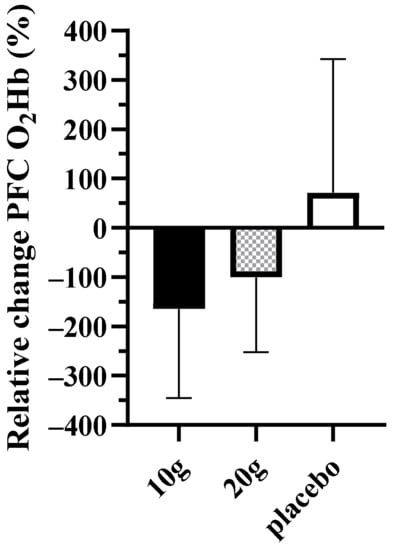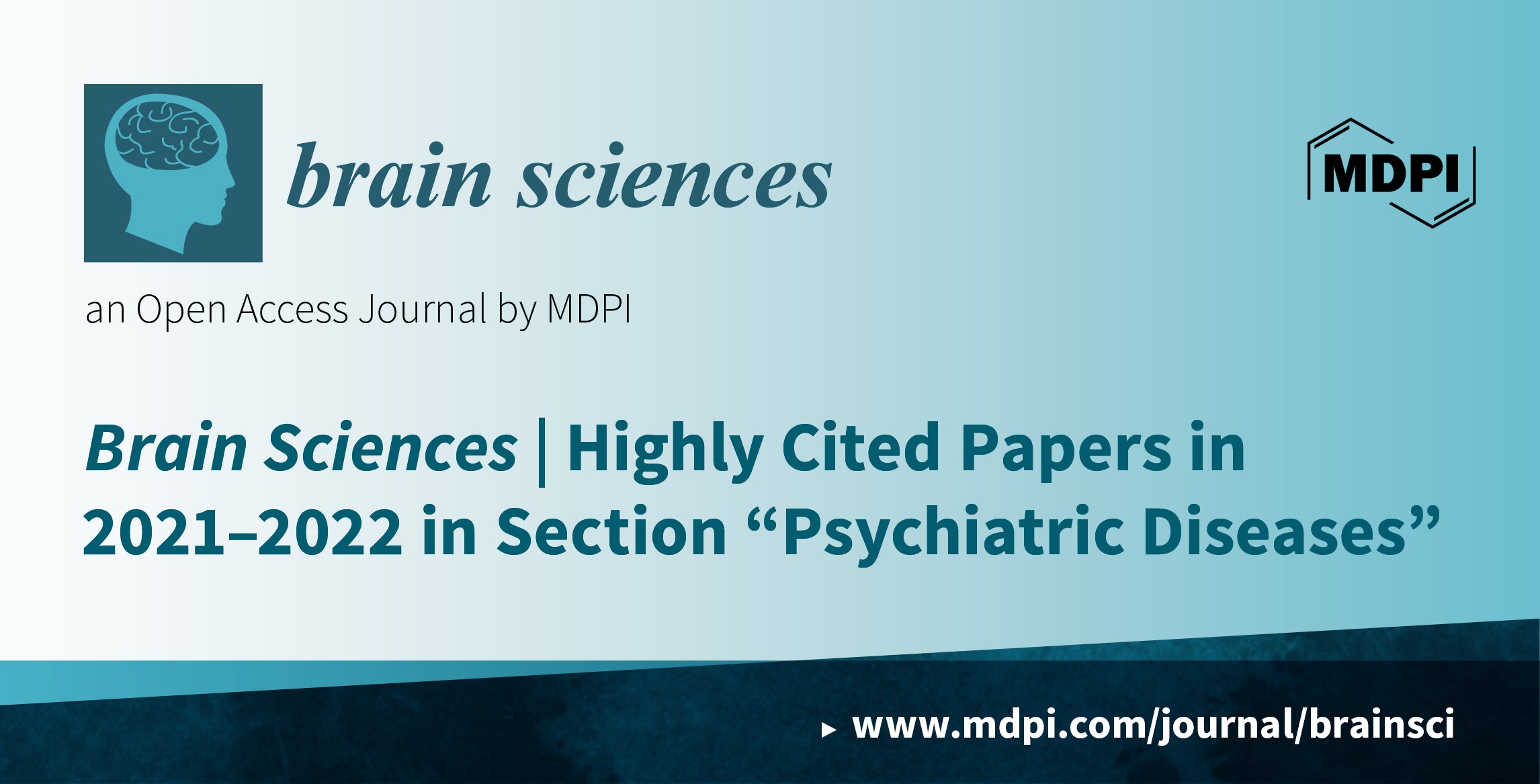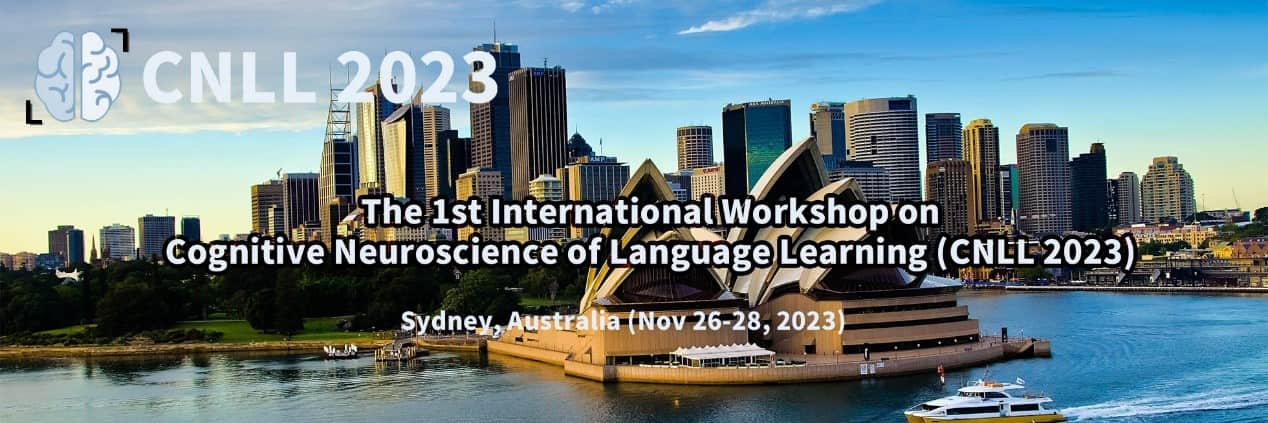-
 Autism Spectrum, Hikikomori Syndrome and Internet Gaming Disorder: Is There a Link
Autism Spectrum, Hikikomori Syndrome and Internet Gaming Disorder: Is There a Link -
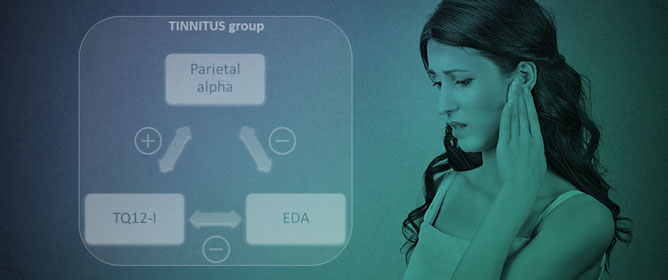 Listening Effort in Tinnitus: A Pilot Study Employing a Light EEG Headset and Skin Conductance Assessment during the Listening to a Continuous Speech Stimulus under Different SNR Conditions
Listening Effort in Tinnitus: A Pilot Study Employing a Light EEG Headset and Skin Conductance Assessment during the Listening to a Continuous Speech Stimulus under Different SNR Conditions -
 Transcranial Direct Current Stimulation Effects on the Neural Substrate of Conceptual Representations
Transcranial Direct Current Stimulation Effects on the Neural Substrate of Conceptual Representations
Journal Description
Brain Sciences
Brain Sciences
is an international, peer-reviewed, open access journal on neuroscience, published monthly online by MDPI.
- Open Access— free for readers, with article processing charges (APC) paid by authors or their institutions.
- High Visibility: indexed within Scopus, SCIE (Web of Science), PubMed, PMC, Embase, PSYNDEX, CAPlus / SciFinder, and other databases.
- Rapid Publication: manuscripts are peer-reviewed and a first decision is provided to authors approximately 14.5 days after submission; acceptance to publication is undertaken in 2.4 days (median values for papers published in this journal in the first half of 2023).
- Recognition of Reviewers: reviewers who provide timely, thorough peer-review reports receive vouchers entitling them to a discount on the APC of their next publication in any MDPI journal, in appreciation of the work done.
Impact Factor:
3.3 (2022);
5-Year Impact Factor:
3.4 (2022)
Latest Articles
Dose–Response of Creatine Supplementation on Cognitive Function in Healthy Young Adults
Brain Sci. 2023, 13(9), 1276; https://doi.org/10.3390/brainsci13091276 (registering DOI) - 01 Sep 2023
Abstract
To determine if creatine (Cr) supplementation could influence cognitive performance and whether any changes were related to changes in prefrontal cortex (PFC) activation during such cognitive tasks, thirty (M = 11, F = 19) participants were evenly randomized to receive supplementation with Cr
[...] Read more.
To determine if creatine (Cr) supplementation could influence cognitive performance and whether any changes were related to changes in prefrontal cortex (PFC) activation during such cognitive tasks, thirty (M = 11, F = 19) participants were evenly randomized to receive supplementation with Cr (CR10:10 g/day or CR20:20 g/day) or a placebo (PLA:10 g/day) for 6 weeks. Participants completed a cognitive test battery (processing speed, episodic memory, and attention) on two separate occasions prior to and following supplementation. Functional near-infrared spectroscopy (fNIRS) was used to measure PFC oxyhemoglobin (O2Hb) during the cognitive evaluation. A two-way repeated measures ANOVA was used to determine the differences between the groups and the timepoints for the cognitive performance scores and PFC O2Hb. In addition, a one-way ANOVA of % change was used to determine pre- and post-differences between the groups. Creatine (independent of dosage) had no significant effect on the measures of cognitive performance. There was a trend for decreased relative PFC O2Hb in the CR10 group versus the PLA group in the processing speed test (p = 0.06). Overall, six weeks of Cr supplementation at a moderate or high dose does not improve cognitive performance or change PFC activation in young adults.
Full article
(This article belongs to the Section Nutritional Neuroscience)
►
Show Figures
Open AccessCase Report
Persistent Cognitive Dysfunction in a Non-Hospitalized COVID-19 Long-Hauler Patient Responding to Cognitive Rehabilitation and Citicoline Treatment
by
and
Brain Sci. 2023, 13(9), 1275; https://doi.org/10.3390/brainsci13091275 (registering DOI) - 01 Sep 2023
Abstract
The Severe Acute Respiratory Syndrome Coronavirus 2 (SARS-CoV-2) infection is characterized by severe flu-like symptoms, which can progress to life-threatening systemic inflammation and multiorgan dysfunction. The nervous system is involved in over one-third of patients, and the most common neurological manifestations concern the
[...] Read more.
The Severe Acute Respiratory Syndrome Coronavirus 2 (SARS-CoV-2) infection is characterized by severe flu-like symptoms, which can progress to life-threatening systemic inflammation and multiorgan dysfunction. The nervous system is involved in over one-third of patients, and the most common neurological manifestations concern the central nervous system, such as headache, fatigue, and brain fog. The activation of innate, humoral, and cellular immune responses, resulting in a cytokine storm and endothelial and mitochondrial dysfunctions, are the main pathophysiological mechanisms of SARS-CoV-2 infection. Citicoline is an exogenous source of choline and cytidine involved in intracellular phospholipid synthesis, which improves blood flow, brain activity, and mitochondrial dysfunction. This report will present the case of a non-hospitalized, 59-year-old female. After a mild form of SARS-CoV-2 infection, the patient developed cognitive disturbances such as forgetfulness and anomia. The multidimensional neuropsychological assessment revealed an impairment in episodic memory with borderline performance in executive and visuospatial functioning. Cognitive rehabilitation and treatment with citicoline 1000 mg/daily led to a marked improvement in symptoms after six months. Early identification of the neurological sequelae of the Coronavirus Disease 2019 (COVID-19) and timely rehabilitation interventions are required in non-hospitalized long-hauler patients with COVID-19. Long-term treatment with citicoline should be considered as potentially effective in improving cognitive functioning in subjects with Post COVID-19 Neurological Syndrome.
Full article
(This article belongs to the Section Neurorehabilitation)
Open AccessStudy Protocol
Repetitive Transcranial Magnetic Stimulation (rTMS) in Post-Traumatic Stress Disorder: Study Protocol of a Nationwide Randomized Controlled Clinical Trial of Neuro-Enhanced Psychotherapy “TraumaStim”
by
, , , , , and
Brain Sci. 2023, 13(9), 1274; https://doi.org/10.3390/brainsci13091274 (registering DOI) - 31 Aug 2023
Abstract
The use of high-frequency Transcranial Magnetic Stimulation (HF-rTMS) of the right dorsolateral prefrontal cortex (DLPFC) in treating Post-traumatic Stress Disorder (PTSD) is currently regarded as a level B intervention (probable effectiveness). HF-rTMS has attracted interest as a neuromodulation therapeutic method for PTSD. Prolonged
[...] Read more.
The use of high-frequency Transcranial Magnetic Stimulation (HF-rTMS) of the right dorsolateral prefrontal cortex (DLPFC) in treating Post-traumatic Stress Disorder (PTSD) is currently regarded as a level B intervention (probable effectiveness). HF-rTMS has attracted interest as a neuromodulation therapeutic method for PTSD. Prolonged exposure and reactivation therapy are also regarded as first-line treatments for PTSD. Randomized controlled clinical studies examining the effectiveness of several HF-rTMS sessions coupled with psychotherapy have not yet been completed. In total, 102 patients with refractory PTSD will be randomly assigned (1:1) to reactivation therapy, in addition to either active HF-rTMS (20 Hz) or sham HF-rTMS, for 12 sessions in a nationwide, multicenter, double-blind controlled trial. The impact on PTSD symptoms and neurocognitive functioning will be assessed. The primary outcome is the PTSD severity score measured based on the Clinician-Administered PTSD Scale (CAPS-5) at one month. If this additional therapy is successful, it may strengthen the case for regulatory authorities to approve this additional technique of treating PTSD. Additionally, it expands the field of neurostimulation-assisted psychotherapy.
Full article
(This article belongs to the Special Issue Innovative Treatments for Post-traumatic Stress Disorder (PTSD))
►▼
Show Figures

Figure 1
Open AccessArticle
Computer-Assisted Microcatheter Shaping for Intracranial Aneurysm Embolization
Brain Sci. 2023, 13(9), 1273; https://doi.org/10.3390/brainsci13091273 (registering DOI) - 31 Aug 2023
Abstract
Background: This study investigates the accuracy, stability, and safety of computer-assisted microcatheter shaping for intracranial aneurysm coiling. Methods: Using the solid model, a microcatheter was shaped using computer-assisted techniques or manually to investigate the accuracy and delivery of microcatheter-shaping techniques in aneurysm embolization.
[...] Read more.
Background: This study investigates the accuracy, stability, and safety of computer-assisted microcatheter shaping for intracranial aneurysm coiling. Methods: Using the solid model, a microcatheter was shaped using computer-assisted techniques or manually to investigate the accuracy and delivery of microcatheter-shaping techniques in aneurysm embolization. Then, forty-eight patients were randomly assigned to the computer-assisted microcatheter-shaping (CAMS) group or the manual microcatheter-shaping (MMS) group, and the accuracy, stability, and safety of microcatheter in the patients were compared between the CAMS and MMS groups. Results: The speed of the successful microcatheter position was significantly faster in the CAMS group than in the MMS group (114.4 ± 23.99 s vs. 201.9 ± 24.54 s, p = 0.015) in vitro. In particular for inexperienced operators, the speed of the microcatheter position with the assistance of computer software is much faster than manual microcatheter shaping (93.6 ± 29.23 s vs. 228.9 ± 31.27 s, p = 0.005). In vivo, the time of the microcatheter position in the MMS group was significantly longer than that in the CAMS group (5.16 ± 0.46 min vs. 2.48 ± 0.32 min, p = 0.0001). However, the mRS score at discharge, the 6-month follow-up, and aneurysm regrowth at the 6-month follow-up were all similar between the groups. Conclusions: Computer-assisted microcatheter shaping is a novel and safe method for microcatheter shaping that introduces higher accuracy in microcatheter shaping during the treatment of intracranial aneurysms. Significant: Endovascular coiling of intracranial aneurysms can be truly revolutionized through computer assistance, which could improve the endovascular treatment of aneurysms.
Full article
(This article belongs to the Section Neurosurgery and Neuroanatomy)
►▼
Show Figures

Figure 1
Open AccessArticle
The Cannabigerol Derivative VCE-003.2 Exerts Therapeutic Effects in 6-Hydroxydopamine-Lesioned Mice: Comparison with The Classic Dopaminergic Replacement Therapy
Brain Sci. 2023, 13(9), 1272; https://doi.org/10.3390/brainsci13091272 - 31 Aug 2023
Abstract
(1) Background: A cannabigerol aminoquinone derivative, so-called VCE-003.2, has been found to behave as a neuroprotective agent (administered both i.p. and orally) in different experimental models of Parkinson’s disease (PD) in mice. These effects were exerted through mechanisms that involved the activation of
[...] Read more.
(1) Background: A cannabigerol aminoquinone derivative, so-called VCE-003.2, has been found to behave as a neuroprotective agent (administered both i.p. and orally) in different experimental models of Parkinson’s disease (PD) in mice. These effects were exerted through mechanisms that involved the activation of a regulatory site within the peroxisome proliferator-activated receptor-γ (PPAR-γ). (2) Methods: We are now interested in comparing such neuroprotective potential of VCE-003.2, orally administered, with the effect of the classic dopaminergic replacement therapy with L-DOPA/benserazide in similar conditions, using 6-hydroxydopamine-lesioned mice. (3) Results: The oral administration of VCE-003.2 during 14 days at the dose of 20 mg/kg improved, as expected, the neurological status (measured in motor tests) in these mice. This correlated with a preservation of TH-labelled neurons in the substantia nigra. By contrast, the treatment with L-DOPA/benserazide (during 7 days at 2 mg/kg) was significantly less active in these experimental conditions, in concordance with their profile as a mere symptom-alleviating agent. (4) Conclusions: Our results confirmed again the therapeutic profile of VCE-003.2 in experimental PD and revealed a different and more relevant effect, as a disease modifier, compared to the classic symptom-alleviating L-DOPA treatment. This reinforces the interest in VCE-003.2 for a future clinical development in this disease.
Full article
(This article belongs to the Special Issue Molecular Mechanism and Pathology of Parkinson's Disease)
►▼
Show Figures

Figure 1
Open AccessArticle
Conversion and Obsessive–Phobic Symptoms Predict IL-33 and IL-28A Levels in Individuals Diagnosed with COVID-19
by
, , , , , , , , , and
Brain Sci. 2023, 13(9), 1271; https://doi.org/10.3390/brainsci13091271 - 31 Aug 2023
Abstract
The first epidemiological wave of the incidence of COVID-19 in Bulgaria was registered in June 2020. After the wave peak, we conducted a study in persons diagnosed with COVID-19 (N = 52). They were assessed with the anxiety–depressive scale (ADS), including basic (BS),
[...] Read more.
The first epidemiological wave of the incidence of COVID-19 in Bulgaria was registered in June 2020. After the wave peak, we conducted a study in persons diagnosed with COVID-19 (N = 52). They were assessed with the anxiety–depressive scale (ADS), including basic (BS), vegetative (VS), conversion (CS), obsessive–phobic (OPS), and depressive (DS) symptoms. ADS assessment of individuals diagnosed with SARS-CoV-2 indicated a correlation between OPS and IL-33 values. IL-10 levels were higher than reference ranges in all patients. Multiple linear regression analyses demonstrated that combination of CS and OPS explained 28% of IL-33 levels, while combination of symptoms from all ADS dimensions explained 24% of IL-33 levels. It was also found that 21% of IL-28A levels was explained from the combination by all ADS dimensions, whereas OPS was the predictor for lower concentrations. The obtained results revealed meaningful correlations between psycho neuro–immunological factors in pathogenesis of illness from the coronavirus infection.
Full article
(This article belongs to the Special Issue Anxious Brain: Stress Influence on the Nervous System)
Open AccessArticle
Learning by Heart or with Heart: Brain Asymmetry Reflects Pedagogical Practices
Brain Sci. 2023, 13(9), 1270; https://doi.org/10.3390/brainsci13091270 (registering DOI) - 31 Aug 2023
Abstract
Brain hemispheres develop rather symmetrically, except in the case of pathology or intense training. As school experience is a form of training, the current study tested the influence of pedagogy on morphological development through the cortical thickness (CTh) asymmetry index (AI). First, we
[...] Read more.
Brain hemispheres develop rather symmetrically, except in the case of pathology or intense training. As school experience is a form of training, the current study tested the influence of pedagogy on morphological development through the cortical thickness (CTh) asymmetry index (AI). First, we compared the CTh AI of 111 students aged 4 to 18 with 77 adults aged > 20. Second, we investigated the CTh AI of the students as a function of schooling background (Montessori or traditional). At the whole-brain level, CTh AI was not different between the adult and student groups, even when controlling for age. However, pedagogical experience was found to impact CTh AI in the temporal lobe, within the parahippocampal (PHC) region. The PHC region has a functional lateralization, with the right PHC region having a stronger involvement in spatiotemporal context encoding, while the left PHC region is involved in semantic encoding. We observed CTh asymmetry toward the left PHC region for participants enrolled in Montessori schools and toward the right for participants enrolled in traditional schools. As these participants were matched on age, intelligence, home-life and socioeconomic conditions, we interpret this effect found in memory-related brain regions to reflect differences in learning strategies. Pedagogy modulates how new concepts are encoded, with possible long-term effects on knowledge transfer.
Full article
(This article belongs to the Special Issue Recent Advances in Brain Lateralization)
►▼
Show Figures
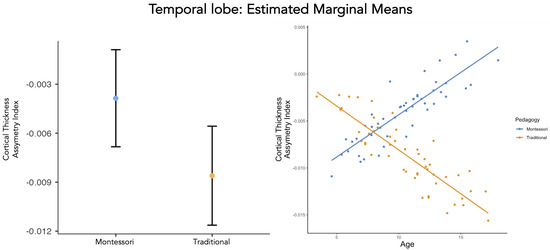
Figure 1
Open AccessReview
The Importance of M1-and M2-Polarized Macrophages in Glioma and as Potential Treatment Targets
by
, , , , , , , , and
Brain Sci. 2023, 13(9), 1269; https://doi.org/10.3390/brainsci13091269 - 31 Aug 2023
Abstract
Glioma is the most common and malignant tumor of the central nervous system. Glioblastoma (GBM) is the most aggressive glioma, with a poor prognosis and no effective treatment because of its high invasiveness, metabolic rate, and heterogeneity. The tumor microenvironment (TME) contains many
[...] Read more.
Glioma is the most common and malignant tumor of the central nervous system. Glioblastoma (GBM) is the most aggressive glioma, with a poor prognosis and no effective treatment because of its high invasiveness, metabolic rate, and heterogeneity. The tumor microenvironment (TME) contains many tumor-associated macrophages (TAMs), which play a critical role in tumor proliferation, invasion, metastasis, and angiogenesis and indirectly promote an immunosuppressive microenvironment. TAM is divided into tumor-suppressive M1-like (classic activation of macrophages) and tumor-supportive M2-like (alternatively activated macrophages) polarized cells. TAMs exhibit an M1-like phenotype in the initial stages of tumor progression, and along with the promotion of lysing tumors and the functions of T cells and NK cells, tumor growth is suppressed, and they rapidly transform into M2-like polarized macrophages, which promote tumor progression. In this review, we discuss the mechanism by which M1- and M2-polarized macrophages promote or inhibit the growth of glioblastoma and indicate the future directions for treatment.
Full article
(This article belongs to the Section Neuro-oncology)
►▼
Show Figures

Figure 1
Open AccessSystematic Review
A 20-Year Systematic Review of the ‘Reading the Mind in the Eyes’ Test across Neurodegenerative Conditions
by
, , , , , , , and
Brain Sci. 2023, 13(9), 1268; https://doi.org/10.3390/brainsci13091268 - 31 Aug 2023
Abstract
Social cognition has a broad theoretical definition, which includes the ability to mentalise, i.e., recognise and infer mental states to explain and predict another’s behaviour. There is growing recognition of the clinical, diagnostic, and prognostic value of assessing a person’s ability to perform
[...] Read more.
Social cognition has a broad theoretical definition, which includes the ability to mentalise, i.e., recognise and infer mental states to explain and predict another’s behaviour. There is growing recognition of the clinical, diagnostic, and prognostic value of assessing a person’s ability to perform social cognitive tasks, particularly aspects of theory of mind, such as mentalising. One such measure of mentalising is the ‘Reading the Mind in the Eyes’ test (RMET). This systematic review and meta-analysis consider performance on the RMET, applied to people with neurodegenerative conditions in matched control studies, since its publication in 2001. Overall, this review includes 22 papers with data from N = 800 participants with neurodegenerative conditions: Alzheimer’s disease, n = 31; Parkinson’s disease, n = 221; Lewy body dementia, n = 33; motor neuron disease, n = 218; Huntington’s disease n = 80; multiple sclerosis, n = 217; and N = 601 matched typical controls. Our meta-analyses show that deficits in mentalising, as measured by the RMET, are consistently reported across neurodegenerative conditions, with participants in both early and late disease stages being affected. Social cognition is an emerging field of cognitive neuroscience requiring specific and sensitive measurement across each subdomain. Adult-based meta-normative data feature, for which future groups or individuals could be compared against, and hypotheses relating to the source of these mentalising deficits are further discussed. This review was registered with PROSPERO (CRD42020182874).
Full article
(This article belongs to the Special Issue Reviews in Neuropsychology)
►▼
Show Figures
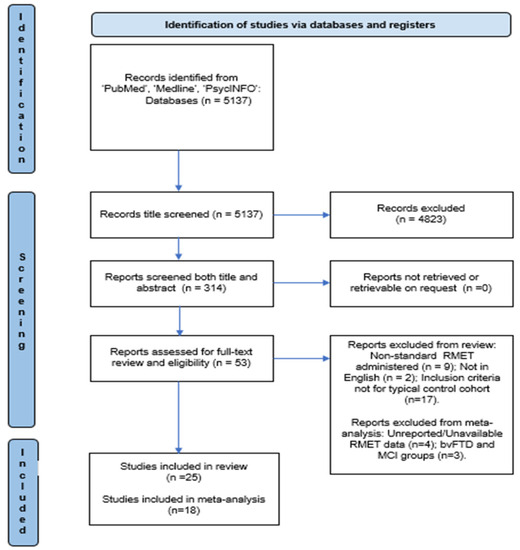
Figure 1
Open AccessArticle
Hand Motions Reveal Attentional Status and Subliminal Semantic Processing: A Mouse-Tracking Technique
Brain Sci. 2023, 13(9), 1267; https://doi.org/10.3390/brainsci13091267 - 31 Aug 2023
Abstract
Theories of embodied cognition suggest that hand motions and cognition are closely interconnected. An emerging technique of tracking how participants move a computer mouse (i.e., the mouse-tracking technique) has shown advantages over the traditional response time measurement to detect implicit cognitive conflicts. Previous
[...] Read more.
Theories of embodied cognition suggest that hand motions and cognition are closely interconnected. An emerging technique of tracking how participants move a computer mouse (i.e., the mouse-tracking technique) has shown advantages over the traditional response time measurement to detect implicit cognitive conflicts. Previous research suggests that attention is essential for subliminal processing to take place at a semantic level. However, this assumption is challenged by evidence showing the presence of subliminal semantic processing in the near-absence of attention. The inconsistency of evidence could stem from the insufficient sensitivity in the response time measurement. Therefore, we examined the role of attention in subliminal semantic processing by analyzing participants’ hand motions using the mouse-tracking technique. The results suggest that subliminal semantic processing is not only enhanced by attention but also occurs when attention is disrupted, challenging the necessity of facilitated top-down attention for subliminal semantic processing, as claimed by a number of studies. In addition, by manipulating the color of attentional cues, our experiment shows that the cue color per se could influence participants’ response patterns. Overall, the current study suggests that attentional status and subliminal semantic processing can be reliably revealed by temporal–spatial features extracted from cursor motion trajectories.
Full article
(This article belongs to the Special Issue From Bench to Bedside: Motor-Cognitive Interactions)
►▼
Show Figures
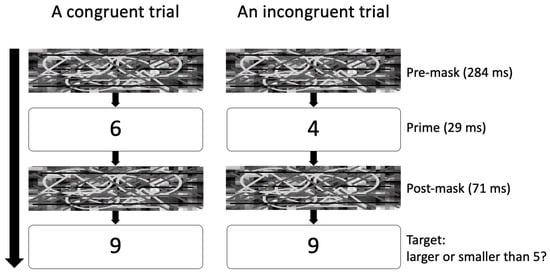
Figure 1
Open AccessArticle
The Influence of Age and Physical Activity on Locomotor Adaptation
Brain Sci. 2023, 13(9), 1266; https://doi.org/10.3390/brainsci13091266 - 31 Aug 2023
Abstract
Background: Aging increases individual susceptibility to falls and injuries, suggesting poorer adaptation of balance responses to perturbation during locomotion, which can be measured with the locomotor adaptation task (LAT). However, it is unclear how aging and lifestyle factors affect these responses during walking.
[...] Read more.
Background: Aging increases individual susceptibility to falls and injuries, suggesting poorer adaptation of balance responses to perturbation during locomotion, which can be measured with the locomotor adaptation task (LAT). However, it is unclear how aging and lifestyle factors affect these responses during walking. Hence, the present study investigates the relationship between balance and lifestyle factors during the LAT in healthy individuals across the adult lifespan using a correlational design. Methods: Thirty participants aged 20–78 years performed an LAT on a split-belt treadmill (SBT). We evaluated the magnitude and rate of adaptation and deadaptation during the LAT. Participants reported their lifelong physical and cognitive activity. Results: Age positively correlated with gait-line length asymmetry at the late post-adaptation phase (p = 0.007). These age-related effects were mediated by recent physical activity levels (p = 0.040). Conclusion: Our results confirm that locomotor adaptive responses are preserved in aging, but the ability to deadapt newly learnt balance responses is compromised with age. Physical activity mediates these age-related effects. Therefore, gait symmetry post-adaptation could effectively measure the risk of falling, and maintaining physical activity could protect against declines in balance.
Full article
(This article belongs to the Section Sensory and Motor Neuroscience)
►▼
Show Figures

Figure 1
Open AccessArticle
Association between Mood and Sensation Seeking Following rTMS
by
, , , , , , and
Brain Sci. 2023, 13(9), 1265; https://doi.org/10.3390/brainsci13091265 - 30 Aug 2023
Abstract
Previous studies investigating mood changes in healthy subjects after prefrontal repetitive transcranial magnetic stimulation (rTMS) have shown largely inconsistent results. This may be due to methodological issues, considerable inter-individual variation in prefrontal connectivity or other factors, e.g., personality traits. This pilot study investigates
[...] Read more.
Previous studies investigating mood changes in healthy subjects after prefrontal repetitive transcranial magnetic stimulation (rTMS) have shown largely inconsistent results. This may be due to methodological issues, considerable inter-individual variation in prefrontal connectivity or other factors, e.g., personality traits. This pilot study investigates whether mood changes after rTMS are affected by personality parameters. In a randomized cross-over design, 17 healthy volunteers received three sessions of 1 Hz rTMS to Fz, F3 and T3 (10/20 system). The T3 electrode site served as the control condition with the coil angled 45° to the scalp. Subjective mood was rated at baseline and after each condition. Personality traits were assessed using the NEO Five-Factor Inventory (NEO-FFI) and the Sensation Seeking Scale (SSS). For all conditions, a significant association between mood changes towards a deterioration in mood and SSS scores was observed. There were no differences between conditions and no correlations between mood changes and NEO-FFI. The data show that sensation-seeking personality has an impact on subjective mood changes following prefrontal rTMS in all conditions. Future studies investigating the effects of rTMS on emotional paradigms should include individual measures of sensation-seeking personality. The pre-selection of subjects according to personality criteria may reduce the variability in results.
Full article
(This article belongs to the Special Issue Neuromodulation of Cortical Networks in Neurological and Neuropsychiatric Disorders: Potential Clinical Indications and the Biophysiological Impact of Stimulation)
►▼
Show Figures

Figure 1
Open AccessArticle
The Use of Quantitative Electroencephalography (QEEG) to Assess Post-COVID-19 Concentration Disorders in Professional Pilots: An Initial Concept
by
, , , , , , and
Brain Sci. 2023, 13(9), 1264; https://doi.org/10.3390/brainsci13091264 - 30 Aug 2023
Abstract
Announced by WHO in 2020, the global COVID-19 pandemic caused by SARS-CoV-2 has affected many people, leading to serious health consequences. These consequences are observed in the daily lives of infected patients as various dysfunctions and limitations. More and more people are suffering
[...] Read more.
Announced by WHO in 2020, the global COVID-19 pandemic caused by SARS-CoV-2 has affected many people, leading to serious health consequences. These consequences are observed in the daily lives of infected patients as various dysfunctions and limitations. More and more people are suffering post-COVID-19 complications that interfere with or completely prevent them from working or even functioning independently on a daily basis. The aim of our study was to demonstrate that innovative quantitative electroencephalography (QEEG) can be used to assess cognitive function disorders reported after the COVID-19 pandemic. It is worth noting that no similar study has been conducted to date in a group of pilots. The QEEG method we used is currently one of the basic neurological examinations, enabling easy observation of post-COVID-19 changes in the nervous system. With the innovativeness of this technique, our study shows that the use of quantitative electroencephalography can be a precursor in identifying complications associated with cognitive function disorders after COVID-19. Our study was conducted on twelve 26-year-old pilots. All participants had attended the same flight academy and had contracted SARS-CoV-2 infection. The pilots began to suspect COVID-19 infection when they developed typical symptoms such as loss of smell and taste, respiratory problems, and rapid fatigue. Quantitative electroencephalography (QEEG), which is one of the most innovative forms of diagnostics, was used to diagnose the patients. Comparison of the results between the study and control groups showed significantly higher values of all measurements of alpha, theta, and beta2 waves in the study group. In the case of the sensorimotor rhythm (SMR), the measurement results were significantly higher in the control group compared to the study group. Our study, conducted on pilots who had recovered from COVID-19, showed changes in the amplitudes of brain waves associated with relaxation and concentration. The results confirmed the issues reported by pilots as evidenced by the increased amplitudes of alfa, theta, and beta2 waves. It should be emphasized that the modern diagnostic method (QEEG) presented here has significant importance in the medical diagnosis of various symptoms and observation of treatment effects in individuals who have contracted the SARS-CoV-2 virus. The present study demonstrated an innovative approach to the diagnosis of neurological complications after COVID-19.
Full article
(This article belongs to the Special Issue EEG and Event-Related Potentials)
►▼
Show Figures
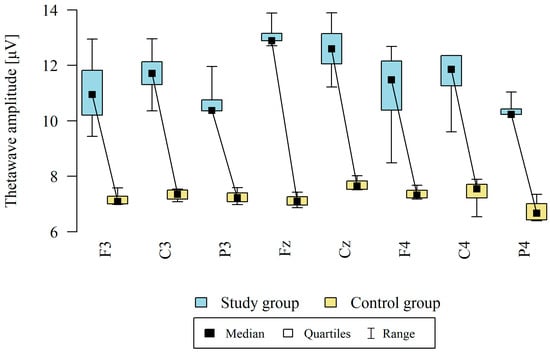
Figure 1
Open AccessArticle
With or without Feedback?—How the Presence of Feedback Affects Processing in Children with Developmental Language Disorder
Brain Sci. 2023, 13(9), 1263; https://doi.org/10.3390/brainsci13091263 - 30 Aug 2023
Abstract
Language acquisition depends on the ability to process and learn probabilistic information, often through the integration of performance feedback. Children with developmental language disorder (DLD) have demonstrated weaknesses in both probabilistic learning and feedback processing, but the individual effects of each skill are
[...] Read more.
Language acquisition depends on the ability to process and learn probabilistic information, often through the integration of performance feedback. Children with developmental language disorder (DLD) have demonstrated weaknesses in both probabilistic learning and feedback processing, but the individual effects of each skill are poorly understood in this population. This study examined school-aged children with DLD (n = 29) and age- and gender-matched children with typical development (TD; n = 44) on a visual probabilistic classification learning task presented with and without feedback. In the feedback-based version of the task, children received performance feedback on a trial-by-trial basis during the training phase of the task. In the feedback-free version, children responded after seeing the correct choice marked with a green border and were not presented with feedback. Children with TD achieved higher accuracy than children with DLD following feedback-based training, while the two groups achieved similar levels of accuracy following feedback-free training. Analyses of event-related potentials (ERPs) provided insight into stimulus encoding processes. The feedback-free task was dominated by a frontal slow wave (FSW) and a late parietal component (LPC) which were not different between the two groups. The feedback-based task was dominated by a parietal slow wave (PSW) and an LPC, both of which were found to be larger in the TD than in the DLD group. In combination, results suggest that engagement with feedback boosts learning in children with TD, but not in children with DLD. When the need to process feedback is eliminated, children with DLD demonstrate behavioral and neurophysiological responses similar to their peers with TD.
Full article
(This article belongs to the Special Issue Neurofunctional Basis of Language Processing)
►▼
Show Figures
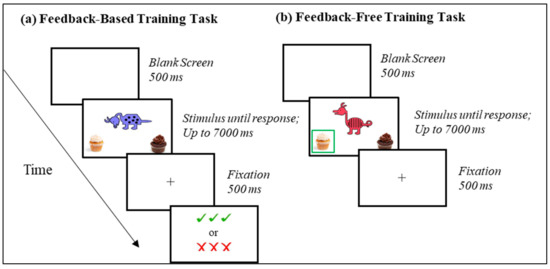
Figure 1
Open AccessReview
Exploring the Relationship between Mood Disorders and Coexisting Health Conditions: The Focus on Nutraceuticals
Brain Sci. 2023, 13(9), 1262; https://doi.org/10.3390/brainsci13091262 - 30 Aug 2023
Abstract
Major depressive disorder and bipolar disorder are the leading causes of global disability. Approximately 50% of patients fail to attain remission, prompting a pronounced focus on the significance of dietary patterns and specific nutrients within the pathophysiology of mood disorders. The connection between
[...] Read more.
Major depressive disorder and bipolar disorder are the leading causes of global disability. Approximately 50% of patients fail to attain remission, prompting a pronounced focus on the significance of dietary patterns and specific nutrients within the pathophysiology of mood disorders. The connection between chronic diseases and mood disorders follows a bidirectional pattern: physical ailments are interrelated with affective disorders, and, concurrently, mood symptoms often precede chronic diseases and have the potential to worsen their prognosis. Nutraceuticals affect factors that could potentially impact the onset of mood disorders: monoamines and brain-derived neurotrophic factor (BDNF) concentrations, neuroinflammation, oxidative stress, and sleep quality. Furthermore, mood disorders rarely manifest in isolation. Typically, such patients concurrently experience other mental disorders or somatic comorbidities: obesity, hypertension, diabetes, polycystic ovary syndrome (PCOS), etc., where providing nutritional support is also pertinent. To optimize the therapeutic approach for individuals with mood disorders, incorporating nutritional support may not solely ameliorate symptoms stemming directly from the mental condition, but also indirectly through interventions targeting comorbidities.
Full article
(This article belongs to the Special Issue Complementary and Alternative Therapies for Mental Health)
►▼
Show Figures

Figure 1
Open AccessArticle
Looking beyond Self-Protection: The Eyes Instruct Systemic Immune Tolerance Early in Life
Brain Sci. 2023, 13(9), 1261; https://doi.org/10.3390/brainsci13091261 - 30 Aug 2023
Abstract
The eyes provide themselves with immune tolerance. Frequent skin inflammatory diseases in young blind people suggest, nonetheless, that the eyes instruct a systemic immune tolerance that benefits the whole body. We tested this premise by using delayed skin contact hypersensitivity (DSCH) as a
[...] Read more.
The eyes provide themselves with immune tolerance. Frequent skin inflammatory diseases in young blind people suggest, nonetheless, that the eyes instruct a systemic immune tolerance that benefits the whole body. We tested this premise by using delayed skin contact hypersensitivity (DSCH) as a tool to compare the inflammatory response developed by sighted (S) and birth-enucleated (BE) mice against oxazolone or dinitrofluorobenzene at the ages of 10, 30 and 60 days of life. Adult mice enucleated (AE) at 60 days of age were also assessed when they reached 120 days of life. BE mice displayed exacerbated DSCH at 60 but not at 10 or 30 days of age. AE mice, in contrast, show no exacerbated DSCH. Skin inflammation in 60-day-old BE mice was hapten exclusive and supported by distinct CD8+ lymphocytes. The number of intraepidermal T lymphocytes and migrating Langerhans cells was, however, similar between S and BE mice by the age of 60 days. Our observations support the idea that the eyes instruct systemic immune tolerance that benefits organs outside the eyes from an early age. The higher prevalence of inflammatory skin disorders reported in young people might then reflect reduced immune tolerance associated with the impaired functional morphology of the eyes.
Full article
(This article belongs to the Section Sensory and Motor Neuroscience)
►▼
Show Figures

Graphical abstract
Open AccessArticle
The Benefit of Bimodal Training in Voice Learning
Brain Sci. 2023, 13(9), 1260; https://doi.org/10.3390/brainsci13091260 - 30 Aug 2023
Abstract
It is known that talkers can be recognized by listening to their specific vocal qualities—breathiness and fundamental frequencies. However, talker identification can also occur by focusing on the talkers’ unique articulatory style, which is known to be available auditorily and visually and can
[...] Read more.
It is known that talkers can be recognized by listening to their specific vocal qualities—breathiness and fundamental frequencies. However, talker identification can also occur by focusing on the talkers’ unique articulatory style, which is known to be available auditorily and visually and can be shared across modalities. Evidence shows that voices heard while seeing talkers’ faces are later recognized better on their own compared to the voices heard alone. The present study investigated whether the facilitation of voice learning through facial cues relies on talker-specific articulatory or nonarticulatory facial information. Participants were initially trained to learn the voices of ten talkers presented either on their own or together with (a) an articulating face, (b) a static face, or (c) an isolated articulating mouth. Participants were then tested on recognizing the voices on their own regardless of their training modality. Consistent with previous research, voices learned with articulating faces were recognized better on their own compared to voices learned alone. However, isolated articulating mouths did not provide an advantage in learning the voices. The results demonstrated that learning voices while seeing faces resulted in better voice learning compared to the voices learned alone.
Full article
(This article belongs to the Special Issue Advances in Understanding the Phenomena and Processing in Audiovisual Speech Perception)
►▼
Show Figures
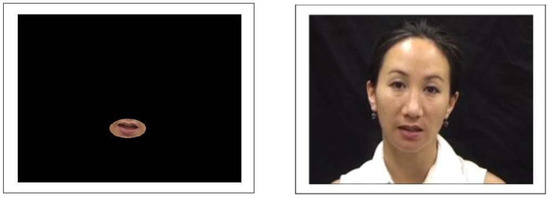
Figure 1
Open AccessReview
Non-Opioid Anesthetics Addiction: A Review of Current Situation and Mechanism
Brain Sci. 2023, 13(9), 1259; https://doi.org/10.3390/brainsci13091259 - 30 Aug 2023
Abstract
Drug addiction is one of the major worldwide health problems, which will have serious adverse consequences on human health and significantly burden the social economy and public health. Drug abuse is more common in anesthesiologists than in the general population because of their
[...] Read more.
Drug addiction is one of the major worldwide health problems, which will have serious adverse consequences on human health and significantly burden the social economy and public health. Drug abuse is more common in anesthesiologists than in the general population because of their easier access to controlled substances. Although opioids have been generally considered the most commonly abused drugs among anesthesiologists and nurse anesthetists, the abuse of non-opioid anesthetics has been increasingly severe in recent years. The purpose of this review is to provide an overview of the clinical situation and potential molecular mechanisms of non-opioid anesthetics addiction. This review incorporates the clinical and biomolecular evidence supporting the abuse potential of non-opioid anesthetics and the foreseeable mechanism causing the non-opioid anesthetics addiction phenotypes, promoting a better understanding of its pathogenesis and helping to find effective preventive and curative strategies.
Full article
(This article belongs to the Section Neuropsychology)
►▼
Show Figures

Figure 1
Open AccessReview
Neuroprotective Potential of Flavonoids in Brain Disorders
by
, , , , , , and
Brain Sci. 2023, 13(9), 1258; https://doi.org/10.3390/brainsci13091258 - 29 Aug 2023
Abstract
Flavonoids are a large subgroup of polyphenols known to be sourced from over 6000 natural products, including fruits, vegetables, bark, and herbs. Due to their antioxidant properties, flavonoids have been implicated as a therapy source for many diseases and conditions, including inflammation, vasculitis,
[...] Read more.
Flavonoids are a large subgroup of polyphenols known to be sourced from over 6000 natural products, including fruits, vegetables, bark, and herbs. Due to their antioxidant properties, flavonoids have been implicated as a therapy source for many diseases and conditions, including inflammation, vasculitis, venous insufficiency, and hemorrhoids. Currently, some flavonoids are being researched for their antioxidant ability concerning neuroprotection. These flavonoids can penetrate the blood–brain barrier and, depending on the specific flavonoid, retain adequate bioavailability in certain brain regions. Further data suggest that flavonoids could have a strong anti-inflammatory effect in the brain, which not only could be a robust therapeutic source for known neuroinflammatory diseases such as Alzheimer’s Disease or Parkinson’s Disease but also could be a therapeutic source for ischemic or hemorrhagic conditions such as a stroke. While flavonoid toxicity exists, they are relatively safe and non-invasive drugs from natural origins. As such, exploring the known mechanisms and therapies may highlight and establish flavonoid therapy as a viable source of therapy for stroke patients. As stated, many flavonoids are already being isolated, purified, and implemented in both in vitro and in vivo experiments. As these flavonoids proceed to clinical trials, it will be important to understand how they function as a therapy, primarily as antioxidants, and by other secondary mechanisms. This review aims to elucidate those mechanisms and explore the neuroprotective role of flavonoids.
Full article
(This article belongs to the Special Issue Cellular and Molecular Basis of Neurodegenerative Disease)
►▼
Show Figures

Figure 1
Open AccessArticle
Transcranial Direct-Current Stimulation Improves Verbal Fluency in Children with Attention Deficit Hyperactivity Disorder (ADHD)
Brain Sci. 2023, 13(9), 1257; https://doi.org/10.3390/brainsci13091257 - 29 Aug 2023
Abstract
Individuals with attention deficit hyperactivity disorder (ADHD) struggle with impaired verbal fluency as an executive function. The left and right dorsolateral prefrontal cortex (dlPFC) and the right inferior frontal gurus (IFG), which show reduced functionality in individuals with ADHD, are involved in verbal
[...] Read more.
Individuals with attention deficit hyperactivity disorder (ADHD) struggle with impaired verbal fluency as an executive function. The left and right dorsolateral prefrontal cortex (dlPFC) and the right inferior frontal gurus (IFG), which show reduced functionality in individuals with ADHD, are involved in verbal fluency. In this study, a total of thirty-seven children with ADHD participated in two separate experiments. Each experiment included three different stimulation conditions: anodal left dlPFC/cathodal right vmPFC stimulation, the reversed montage, and a sham stimulation in Experiment 1, and anodal right dlPFC, anodal right IFG with extracranial return electrode, and a sham stimulation in Experiment 2. During each session, participants performed semantic and phonemic verbal fluency tasks while receiving tDCS. The results revealed a significant main effect of stimulation condition on phonemic verbal fluency during anodal left dlPFC stimulation in Experiment 1, and on semantic verbal fluency during both real stimulation conditions in Experiment 2. In conclusion, this study suggests that anodal left dlPFC stimulation improves phonemic verbal fluency, while anodal right dlPFC and right IFG stimulation enhance semantic verbal fluency. This domain-specific improvement can be attributed to the distinct cognitive demands of phonemic and semantic verbal fluency tasks. Phonemic verbal fluency heavily relies on working memory processes, whereas semantic verbal fluency requires effective inhibitory control and cognitive flexibility.
Full article
(This article belongs to the Section Neurolinguistics)
►▼
Show Figures

Figure 1

Journal Menu
► ▼ Journal Menu-
- Brain Sciences Home
- Aims & Scope
- Editorial Board
- Reviewer Board
- Topical Advisory Panel
- Instructions for Authors
- Special Issues
- Topics
- Sections & Collections
- Article Processing Charge
- Indexing & Archiving
- Editor’s Choice Articles
- Most Cited & Viewed
- Journal Statistics
- Journal History
- Journal Awards
- Society Collaborations
- Conferences
- Editorial Office
Journal Browser
► ▼ Journal BrowserHighly Accessed Articles
Latest Books
E-Mail Alert
News
Topics
Topic in
Biomechanics, Biomedicines, Brain Sciences, Materials, Nanomaterials
Biomechanics and Biomaterial Engineering in Neurological Disorders
Topic Editors: Seifollah Gholampour, Mohammad Reza SafaeiDeadline: 30 September 2023
Topic in
Biomedicines, Brain Sciences, JCM, JVD, Medicina
Advances in Neurocritical Care
Topic Editors: Guoyi Gao, Guangzhi Shi, Zhixiong LiuDeadline: 31 October 2023
Topic in
Biomedicines, Brain Sciences, Geriatrics, Life, Neurology International
Translational Advances in Neurodegenerative Dementias
Topic Editors: Francesco Di Lorenzo, Annibale AntonioniDeadline: 31 December 2023
Topic in
Brain Sciences, Cells, Diagnostics, IJMS, JCM, Pathogens, Pathophysiology
Applied Sciences and Technologies for Detection and Therapies of Pathologies in the Neuronal Environment
Topic Editors: Muh-Shi Lin, Hong Jiang, Yu-Yo SunDeadline: 29 February 2024

Conferences
Special Issues
Special Issue in
Brain Sciences
Advances in the Study of Cortical Excitability, Connectivity and Plasticity by Using TMS-EEG and Other Neurophysiological Techniques
Guest Editors: Florinda Ferreri, Andrea Guerra, Sara Määttä, Lorenzo RocchiDeadline: 5 September 2023
Special Issue in
Brain Sciences
People Recognition through Face, Voice, Name and Their Interactions
Guest Editor: Guido GainottiDeadline: 20 September 2023
Special Issue in
Brain Sciences
New Insights in Developmental Coordination Disorder (DCD)
Guest Editor: Akio NakaiDeadline: 29 September 2023
Special Issue in
Brain Sciences
Brain Imaging and Cognitive Neuroscience in Human Performance, Learning and Training
Guest Editor: Kurtulus IzzetogluDeadline: 20 October 2023
Topical Collections
Topical Collection in
Brain Sciences
Collection on Developmental Neuroscience
Collection Editor: Mark Burke
Topical Collection in
Brain Sciences
Systematic Reviews and Meta-Analyses Collection on Molecular and Cellular Neuroscience
Collection Editor: Andrew Clarkson
Topical Collection in
Brain Sciences
Primary Progressive Aphasia and Apraxia of Speech
Collection Editors: Jordi A. Matias-Guiu, Robert Jr Laforce, Rene L. Utianski
Topical Collection in
Brain Sciences
Human Ultrasound Neuromodulation: State of the Art
Collection Editor: Roland Beisteiner




